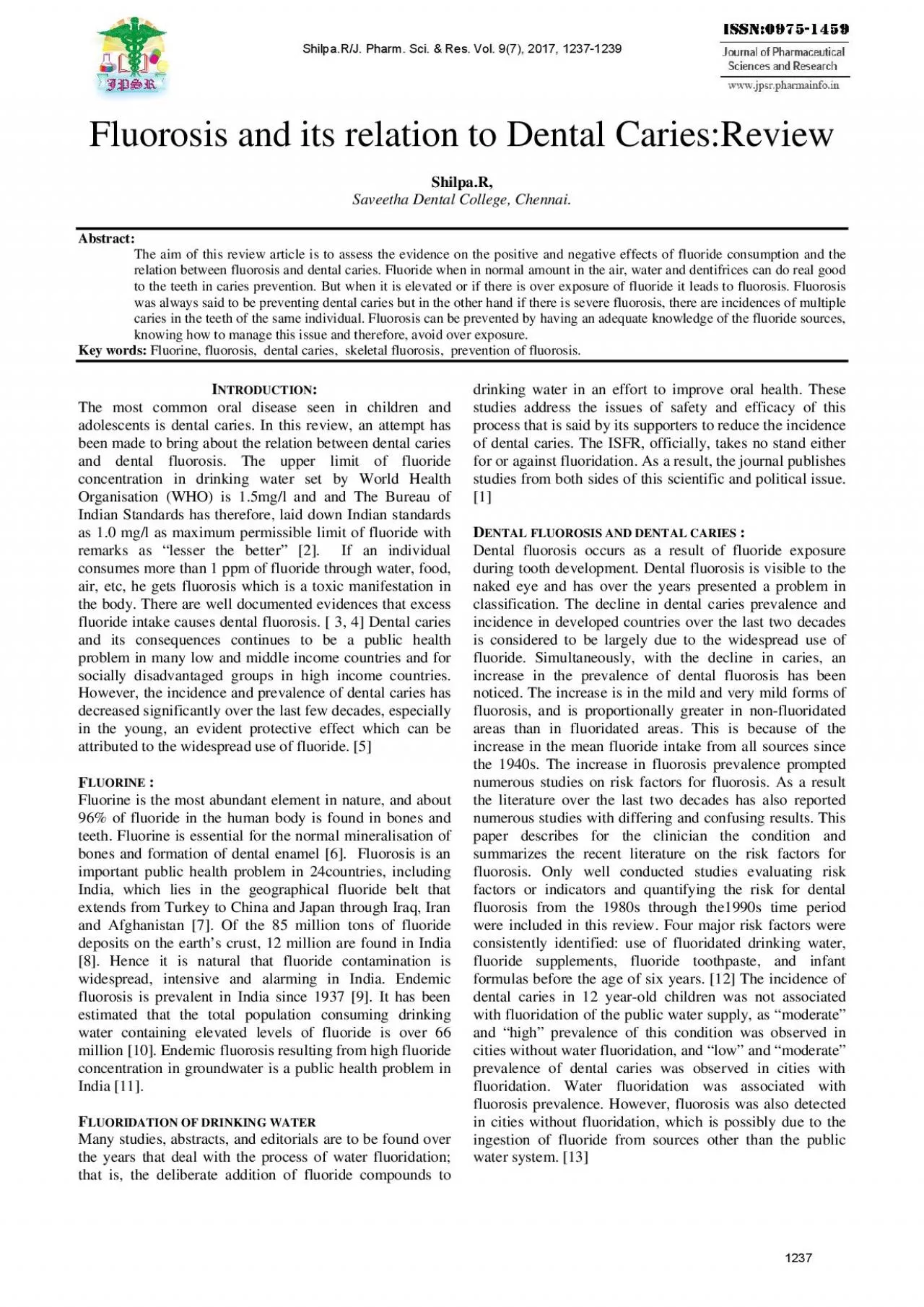PDF-ShilpaR Saveetha Dental College Chennai
Author : deena | Published Date : 2022-09-22
Abstract The aim of this review article is to assess the evidence on the positive and negative effects of fluoride consumption and the relation between fluorosis
Presentation Embed Code
Download Presentation
Download Presentation The PPT/PDF document "ShilpaR Saveetha Dental College Chenna..." is the property of its rightful owner. Permission is granted to download and print the materials on this website for personal, non-commercial use only, and to display it on your personal computer provided you do not modify the materials and that you retain all copyright notices contained in the materials. By downloading content from our website, you accept the terms of this agreement.
ShilpaR Saveetha Dental College Chennai: Transcript
Download Rules Of Document
"ShilpaR Saveetha Dental College Chennai"The content belongs to its owner. You may download and print it for personal use, without modification, and keep all copyright notices. By downloading, you agree to these terms.
Related Documents














